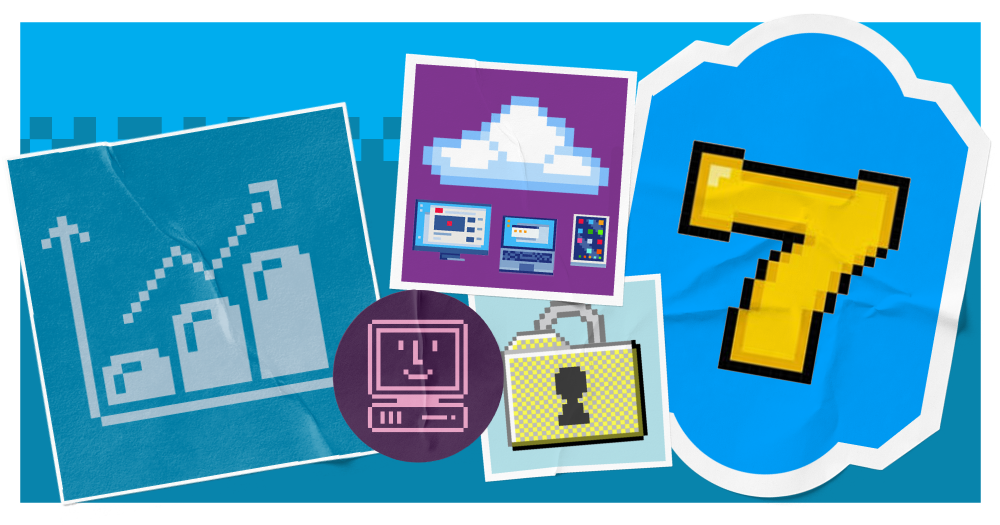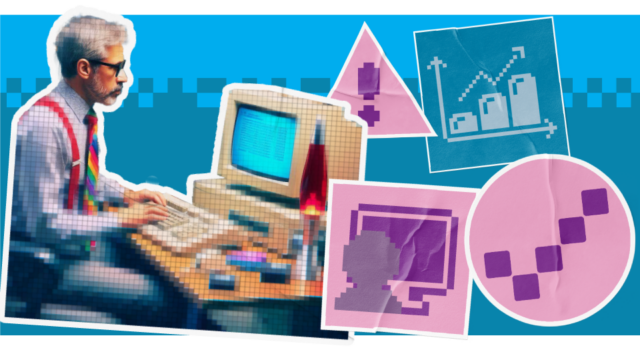IT is the lifeblood of any business. It’s crucial to your daily operations, including your ability to serve customers, communicate across teams, store important data and generate revenue.
As you grow, you need your IT operations to expand with you. This allows you to meet new demand and minimise any growing pains within your business, such as productivity bottlenecks.
However, growing your IT operations can bring challenges – particularly rising costs. This often occurs when businesses feel pressured to invest in tools as ‘quick fixes’ or patch-on solutions, leading to bloat across their operations.
An effective, scalable IT model reduces the risk of skyrocketing costs, through an underlying infrastructure which can expand sensibly works as your needs evolve. It drives productivity and resilience, even in high growth stages, helping you to manage workload.
But to build a scalable IT operating model, you need intelligent solutions, sufficient resource, smart management and a dedicated strategy. Many businesses lack the staff, skills and tools needed to achieve this, leaving them with clunky IT operations which fail under pressure.
Here are our top tips for building a scalable IT operating model in your business and overcoming any obstacles.
1. Align your IT with your business goals_
It’s crucial your IT strategy supports your business objectives. This enables it to meet your growth plans and the outcomes you want to achieve.
To align your IT to your goals, start by conducting a thorough analysis of your business goals. Ask what you do as a business and what you want to achieve, with a focus on how IT facilitates that. For example, if your goal is to increase customer satisfaction, your IT strategy might focus on improving customer support systems or self-service tools.
Once you have a clear understanding of your business goals, evaluate your current IT infrastructure and processes. Identify areas where IT can be improved to better support your objectives. This might involve investing in new technologies, optimising existing systems or reorganising your IT team.
Finally, prioritise IT initiatives based on their contribution to your business goals. Not all IT projects will have the same level of impact, so it’s important to focus on those that will deliver the greatest value.
By aligning your IT strategy with your business objectives, you can ensure that your IT resources are being used effectively to drive growth and success.
2. Conduct a thorough IT assessment_
Before you can build a scalable IT operating model, you need to understand the current state. A comprehensive IT assessment is essential for identifying areas for improvement.
By evaluating your existing infrastructure, processes and resources, you can identify potential bottlenecks, inefficiencies and risks that may be hindering your business’s growth or cause barriers later.
Start by conducting an extensive inventory of your IT assets, including hardware, software and network equipment. Assess the age, condition and performance of each component to identify any outdated or underperforming equipment. Older solutions may not leverage the latest tech that makes them scalable, so these may need to be replaced as part of the project.
Next, evaluate your IT processes and procedures. Identify any manual, time-consuming tasks that could be automated and assess the efficiency of your IT service delivery. Look for any opportunities to streamline workflows and reduce operational costs, as this will be hugely beneficial when you start to scale.
3. Leverage augmented IT and service design_
Few businesses have the skills internally they need to optimally run their IT operations, never mind dedicate time to evolving their underlying infrastructure.
In these scenarios, augmented IT services can build on your existing resources, allowing you to meet daily demand for IT as you grow. This frees up internal capacity to focus on your growth strategies.
Some IT service providers may also be able to help you to improve your IT infrastructure, leveraging their expert guidance to help you build an evergreen operating model.
If you are leveraging external IT support, ask if they utilise service design. By focusing on the entire user experience, service design helps to create IT solutions that are not only functional but also user-friendly, efficient and aligned with business objectives. It also helps to identify and eliminate inefficiencies in IT processes, leading to improved productivity and cost savings.
When leveraging third party providers, this can ensure you get a service package that is completely tailored to your needs, helping it to evolve as your business does.
4. Build a scalable IT architecture_
A scalable IT architecture is essential for supporting business growth and adapting to changing market conditions. By investing in the right technologies and infrastructure, you can ensure that your IT systems can handle increasing workloads and accommodate new applications and services.
Here are some key components of a scalable IT architecture:
- Cloud computing: Cloud-based services can provide flexibility, scalability and cost-effectiveness. By moving workloads to the cloud, you can easily adjust your IT resources to meet changing demands. Plus, most provider offer pay-as-you-go pricing to limit the financial impact.
- Virtualisation: Virtualisation allows you to create multiple virtual machines on a single physical server, improving resource utilisation and enabling rapid deployment of new applications.
- Automation: Automating IT tasks can reduce manual effort, improve efficiency and minimise errors. It can also enable you to do more, without necessarily having to recruit new staff. Automation tools can be used to automate tasks such as server provisioning, software deployment and configuration management.
- Modular architecture: A modular architecture breaks down IT systems into smaller, independent components that can be easily added, removed or modified. This makes it easier to scale your IT infrastructure and adapt to changing requirements.
- Redundancy: Implementing redundancy can help to ensure business continuity by providing backup systems and disaster recovery capabilities. This can include redundant servers, storage and network components.
- AI: AI can help you to leverage machine learning to fill resource gaps within your business. Within IT, it can help you to generate collateral (such as troubleshooting guides), monitor security threats and more.
By investing in a scalable IT architecture, you can position your business for growth and success. A well-designed architecture will provide the foundation for your IT operations and enable you to adapt to future challenges.
5. Establish strong governance and management_
The long-term management of your IT relies on robust governance. Set clear roles and responsibilities within your organisation, so it is clear exactly who owns what even as you grow.
As you do this exercise, you may also start to uncover gaps where there isn’t enough resource to cover a specific area. You’ll want to allocate appropriate resource as you start to grow, as per a recruitment plan, or consider leveraging external resources to fill the voids.
You’ll also want to implement effective governance practices to ensure alignment with business objectives and compliance with regulations. This should be part of a documented strategy, with policies and procedures that keep you aligned even as demand increases. But remember to revisit these regularly, so you can update them in line with your evolving business needs.
6. Prioritise security and risk management_
In today’s digital age, security and risk management are more critical than ever. A well-protected IT infrastructure is essential for protecting your sensitive data, ensuring business continuity and maintaining customer trust. This will support your growth and prevent precious time lost in high-demand stages.
Here are some key considerations for security and risk management within your IT operating model:
- Risk assessment: Conduct regular risk assessments to identify potential threats and vulnerabilities in your IT environment. This can include threats from cyber attacks, natural disasters and human error.
- Security controls: Implement appropriate security controls to mitigate risks and protect your data. This may include firewalls, intrusion detection systems, encryption and access controls.
- Incident response planning: Develop a comprehensive incident response plan to address security breaches and other IT emergencies. This plan should outline the steps to be taken in the event of an incident, including containment, recovery and lessons learned.
- Employee training and awareness: Educate your employees about security best practices and the importance of protecting sensitive data. This includes training them on password security, phishing prevention and recognising suspicious activity.
- Compliance: Ensure compliance with relevant security regulations and industry standards, such as GDPR and relevant ISO certifications.
- Business continuity planning: Develop a business continuity plan to ensure that your organisation can continue to operate in the event of a disaster or disruption. This plan should include backup and recovery procedures, as well as strategies for maintaining critical business functions.
7. Embrace continuous improvement_
7. Embrace continuous improvement
Continuous improvement is essential for maintaining a scalable and effective IT operating model. By regularly evaluating your IT infrastructure, processes and practices, you can identify areas for optimisation and ensure that your IT department is delivering maximum value to the business.
Regularly conduct assessments of your IT infrastructure, processes and performance to identify areas for improvement and measure progress. Then, compare your IT performance against industry benchmarks to identify best practices and areas for improvement.
You should also make a conscious effort to stay informed about emerging technologies and evaluate their potential benefits. This will help you to encourage innovation and explore new ways to improve efficiency, reduce costs and enhance customer experience.
By embracing continuous improvement, you can create a more agile, efficient and innovative IT operating model that supports your organisation’s growth and success.
Is your IT model scalable?
A scalable IT operating model requires effort. You need the appropriate resources, solutions and a dedicated strategy to gain long-term results. However, many businesses find themselves operating sub-optimally, with rising costs that make it hard to scale.
Understanding how much your IT is costing you is crucial to identifying opportunities to improve and reduce costs. Our total cost of ownership calculator can help you understand how much yours is costing you every year, and what can you do to lower it.




